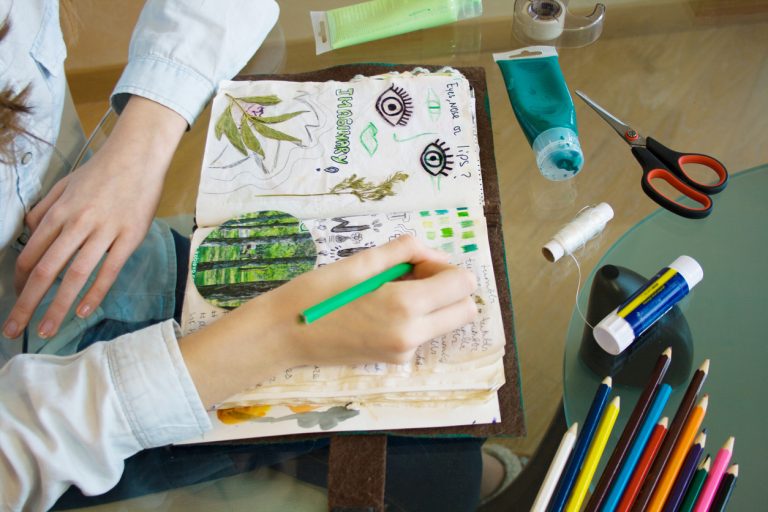Creating art can be a powerful antidote to many of life’s challenges. From aging to loneliness, it can harness a deeper understanding of ourselves and the world around us, contributing to our overall mental health. At a time when many people are struggling, art is a way to confront our difficulties side-on, when our lips may be hesitant or unable to speak directly. It can be a cathartic and healing experience akin to more traditional forms of therapy.
In his book, Art as Therapy, Alain de Botton outlines the seven functions of art as follows: remembering, hope, sorrow, rebalancing, self-understanding, growth and appreciation. Even as a professional artist, making art without the pressure of the external expectations of galleries or clients can be personally rewarding — to create just because and relieve the stresses and anxieties of everyday life in the process. In this article, we’ve put together some art therapy exercises to incorporate into your working week, allowing you to relieve stress more effectively, and reconnect with yourself on a deeper level.
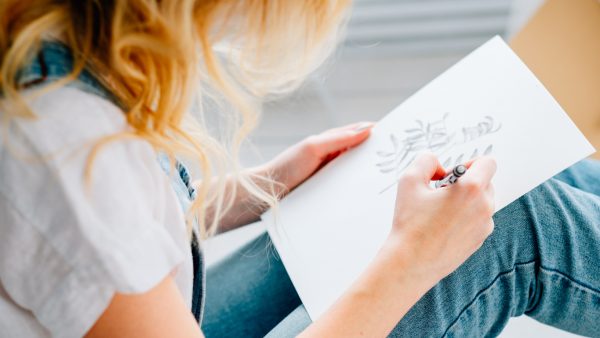
Editor’s note: We are not psychology or mental health experts. The following suggestions are gathered from studies and general knowledge on the benefits of art and mental health. If you need mental health care, reach out to a professional to help devise the best care plan for you.
Before you begin
Embrace your inner child
As adults, many of us have developed an inner voice that silently judges the quality of our creative output against internalised societal standards. We compare our work to that of others, worry about our technical and intellectual abilities, and doubt the value of our message. Battling an inner critic can be exhausting, turning even creative endeavors into a stress-inducing experience. Yet, if you’ve ever observed a child sit down to draw, you’ll have noticed how free and at peace they seem. Undeterred by ‘measuring up’ they mark-make as an act of pure expression, using shape, colour, texture and form as vehicles through which to channel an innate impulse. When you sit down to create, let go of your inner critic to make space for your inner child. Give yourself permission to be unapologetically authentic, and notice those judgmental voices melt away.
Get in the zone
Art making can have similar therapeutic effects to meditation. Manifesting a ‘flow state’ can even alter our perception of time. If you’ve ever been absorbed in an activity, only to look up at the clock and realise a whole day has passed, you’ll know exactly what I’m talking about. Positive psychologist Mihály Csíkszentmihályi has described the flow state as an extended period where: “The ego falls away. Time flies. Every action, movement, and thought follows from the previous one like playing jazz. Your whole being is involved, and you’re using your skills to the utmost.” It’s a sense of deep focus and immersion in the task at hand. This fluidity between mind and body comes with an impressive array of physiological benefits. Studies have shown that it can lower blood pressure, pulse and breathing rates, powerfully centering you in the present moment.
Like any skill, accessing a flow state can take some practise, and its contributing factors vary from person to person, but there are some basic elements that usually help. Clear your workspace and get rid of potential distractions — for example, switch off all social media notifications or unplug the television. Play around with lighting; dim mood lighting can help create a relaxing atmosphere, whilst others work better in natural light. Lastly, make a playlist that matches the mood of the activity you’re trying to access.
Three art therapy exercises to try at home
Colour
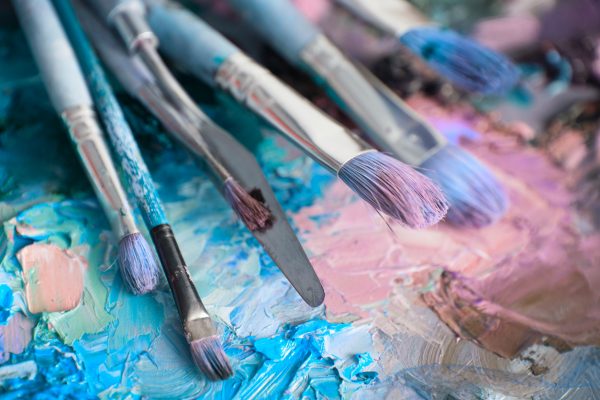
Concentrating on colour can be an excellent mode of self-discovery, allowing us to acknowledge the emotions we are avoiding or mis-recognising. Without too much thought, choose six colours that appeal to you and work with them. You may want to create a colour wheel, for example, or six standalone pieces. Whatever you decide, forget about shape and form, focusing instead on what each specific colour means to you, how it makes you feel, what associations it brings up. What emotion would you label each colour with? Are you currently experiencing these in your life? Are there some colours that express multiple emotions for you? Pay attention to these questions. Identifying and naming a feeling is often the first step in dealing with it.
Scribble
When making art is joyful, it’s because you are attuned to your intuition and sense of play. Psychoanalyst Carl Jung once observes that “without this playing with fantasy, no creative work has ever yet come to birth.” This exercise encourages you to lean into intuition, learn to trust your inner child, and open yourself up to unexpected possibilities.
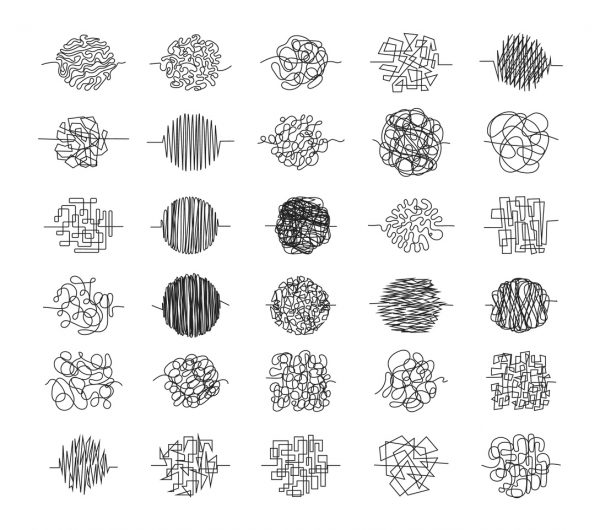
Closing your eyes, take a pen or pencil and scribble for 30 seconds. When you open your eyes, study the lines you’ve made, examine it from all angles until you find an image. This could be a figure, an object, a shape etc. Once you’ve found your image, go back to the piece and fill in colour and details to bring the image into focus. What significance does it have for you? How do these images make you feel? Repeat the exercise a few times to identify recurring patterns.
Journal
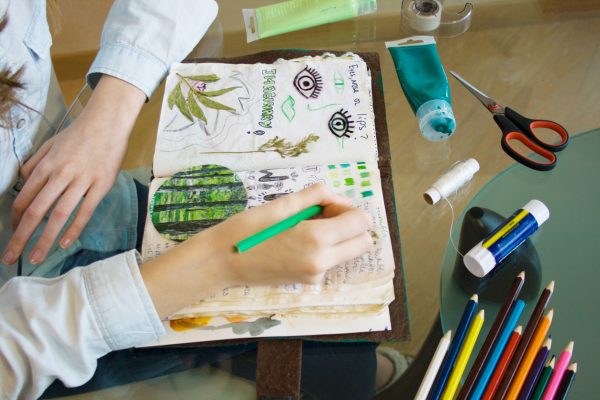
Journaling allows you to monitor how your feelings and experiences change over time. As you evolve, so does your visual language. Practise journaling for 30 minutes each day over the course of a month and see how it affects your mood and perceptions. Think of your journal as a sacred space, where you can manifest dreams through collages, and spend time with the images you encounter each day. Collect things that you’re drawn to: a leaf salvaged from a walk or a passage from a book. Stick them in, create drawings or paintings in response to them, and as you do, notice what it is that draws you to these things, and how they make you feel. The aim is to make physical your response to the everyday stimuli you encounter. At the end of the month, contemplate which objects or situations provoked positive reactions, and which sparked negative ones. With this knowledge you can begin to make positive adjustments.
Further reading
- Art as Therapy – Alain de Botton
- Essential Art Therapy Exercises: Effective Techniques to Manage Anxiety, Depression, and PTSD – Leah Guzman
- Art as Medicine: Creating a Therapy of the Imagination – Shaun McNiff

